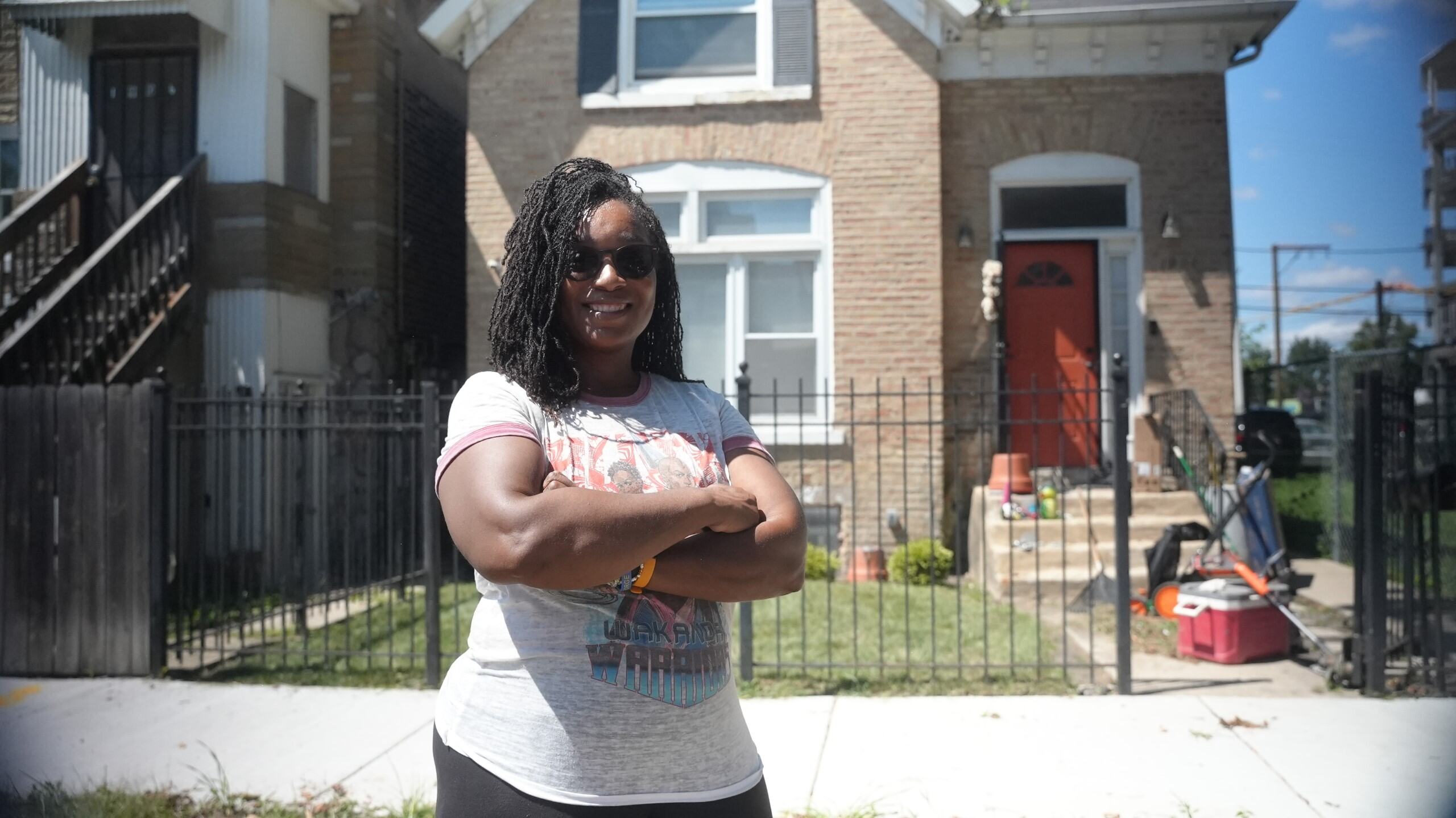Chicago Retrofit Roadmap
As climate change accelerates at a rapid pace, city and state governments are looking for climate strategies to reduce carbon emissions. One of the biggest and most cost-effective ways for cities to reduce carbon emissions is by improving the energy efficiency of buildings.

Single family brick construction homes build before 1942 make up about 14% of Chicago’s building stock.
In Chicago, the opportunity is even greater. Homes in Chicago are generally older, leakier, and use more energy compared to the national and regional housing stock. Most buildings in Chicago are single-family homes, and the majority of those homes were built before 1960.
The Chicago Retrofit Roadmap
In 2020, Elevate began working with the U.S. Department of Energy, the National Renewable Energy Laboratory, the City of Chicago, and ComEd to look at the potential for energy savings in Chicago’s housing stock. The group initiated a three-year project, the Chicago Retrofit Roadmap, to develop and test retrofit solutions that aim to show that the typical Chicago home can reduce energy use by 50%. This is just one climate action strategy that dramatically cuts carbon emissions, while also saves money for Chicago homeowners by reducing their energy costs.
Research: Analysis and Modeling
Research conducted by Elevate and the National Renewable Energy Lab (NREL) with the City of Chicago and ComEd show that greater than 50% energy savings is easily achievable, and beneficial electrification is feasible in Chicago’s older, energy-intensive housing stock under the right conditions without increasing energy burden. Read the fact sheet from Elevate and NREL, “Achieving 50% Energy Savings in Chicago Homes: A Case Study for Advancing Equity and Climate Goals.”
This research will also help to inform Chicago’s citywide planning efforts to develop greenhouse gas emission reduction strategies. Beyond Chicago, this research will help inform energy planning and implementation for communities in the north-central climate region, and particularly those with similar types of housing stock.
Chicago Community Area Energy Profiles
The Chicago Community Area Energy Profiles analyze the energy potential of Chicago neighborhoods by showing potential energy, utility bill, and carbon savings from energy efficiency and electrification retrofits at common Chicago homes.
These energy upgrades help create homes that are resilient in the face of climate change and affordable to the people who need them most. The analysis shows where energy retrofits can have the biggest impact by focusing on common home types that represent nearly 93% of Chicago’s residential buildings, and 20 neighborhoods that have historically seen less investment. Across Chicago as a whole, these energy upgrades can achieve over $220 million in annual utility bill savings for Chicago families, and over 2.5 million metric tons of annual carbon savings.
ACEEE Summer Study Papers
Elevate’s Research and Innovation team presented this research at the 2022 ACEEE Summer Study, “Climate Solutions: Efficiency, Equity, and Decarbonization”.
- Rapid Deployment of Energy Upgrades Through a Community-Scale Approach: Leveraging Partnerships to Achieve Equitable Clean Energy Goals
- Electrification in Chicago: Policy, Partnerships, and Deployment
Field Demonstration: Developing Whole Home Retrofit Packages
By using a modeling tool to characterize Chicago homes and understand how they use energy, the project team came up with a variety of different retrofit packages of energy efficiency measures that work for different types of homes. Depending on what benefits each home the most, the retrofit packages can include air sealing and insulation, LED lighting, high-efficiency HVAC equipment called heat pumps, high-efficiency hot water heaters, and electrification of stoves and dryers.
The modeling of the retrofit packages with Chicago’s housing stock shows that reducing energy by 50% is not only achievable, but that even more savings are possible as more renewable energy becomes more available through the electric grid.
In 2022, these retrofit packages have been implemented in a selection of 10 Chicago homes. In 2022, Elevate completed construction of these retrofit packages at a selection of Chicago homes and will monitor the homes’ performance for a year to measure energy savings, cost savings, and indoor air quality.
Investing in Chicago’s South and West Sides
Many of Chicago’s older, inefficient homes are concentrated in primarily Black and Hispanic/Latino communities on the South and West sides, neighborhoods that have historically been under resourced and disinvested in. Older, leakier homes mean that homeowners in these communities typically pay higher energy bills than other parts of the city. In Chicago, the average annual utility costs (gas and electric) for a single-family household is $2,717.
The project team identified 20 priority communities to focus retrofits on in order to drive clean energy and climate investments to Chicago’s under resourced communities. This is reflective of the Justice40 Initiative, the Biden-Harris Administration’s commitment to ensure 40% of the benefits of its clean energy and climate investments go to underserved communities.
Learn More
Want to learn more about our climate planning? Read about our Municipal Climate Planning work, and stay up to date with our latest news by subscribing to our newsletter.


